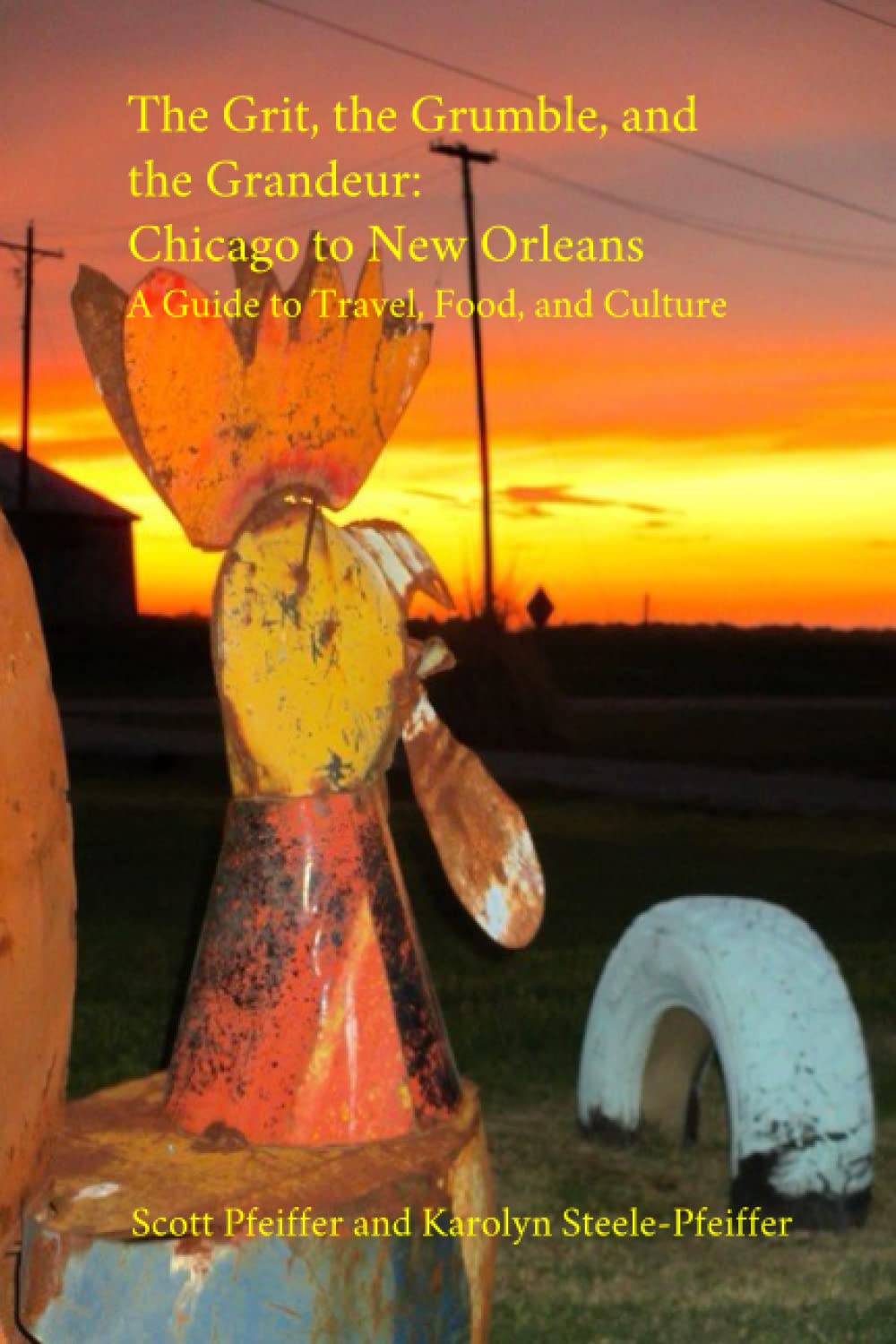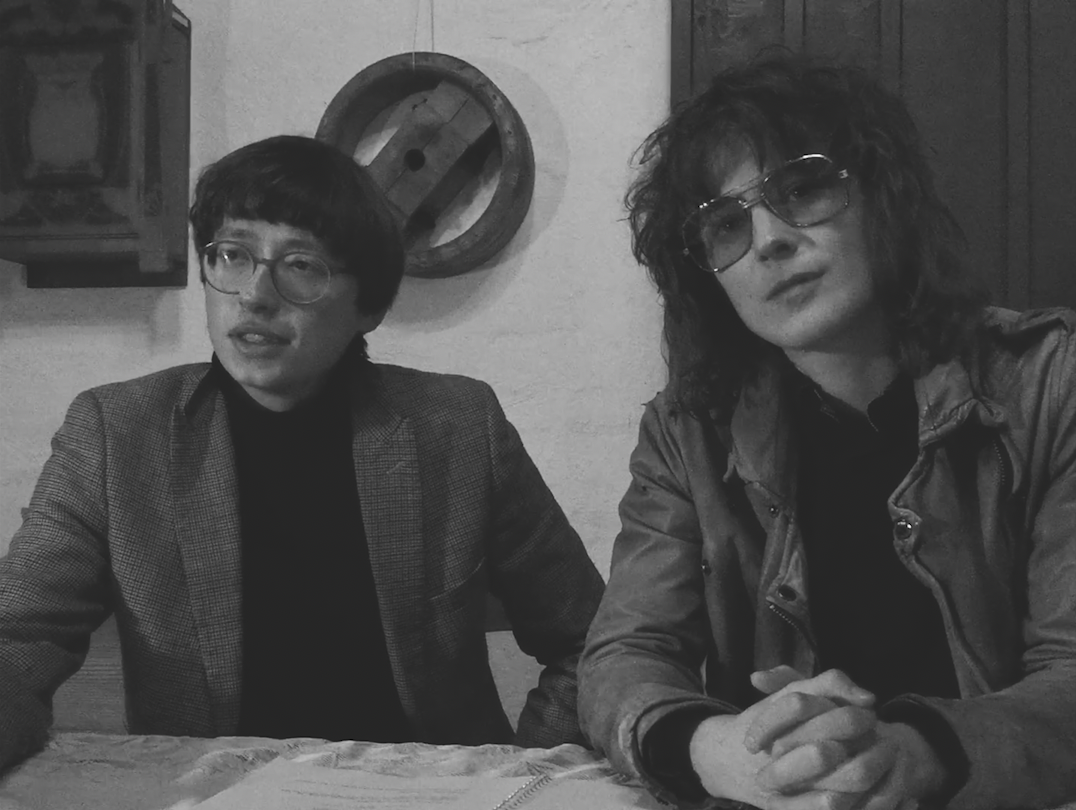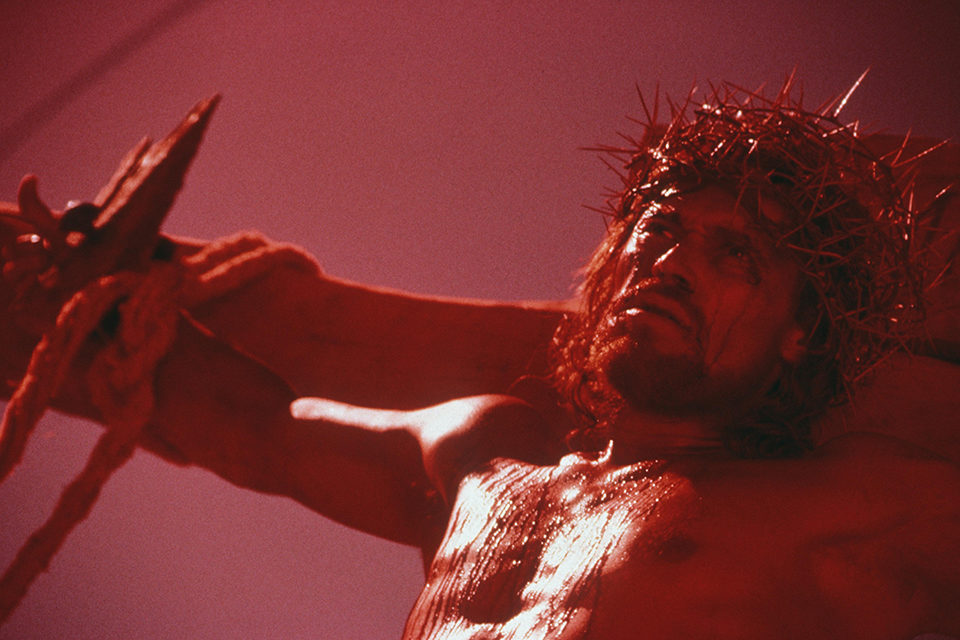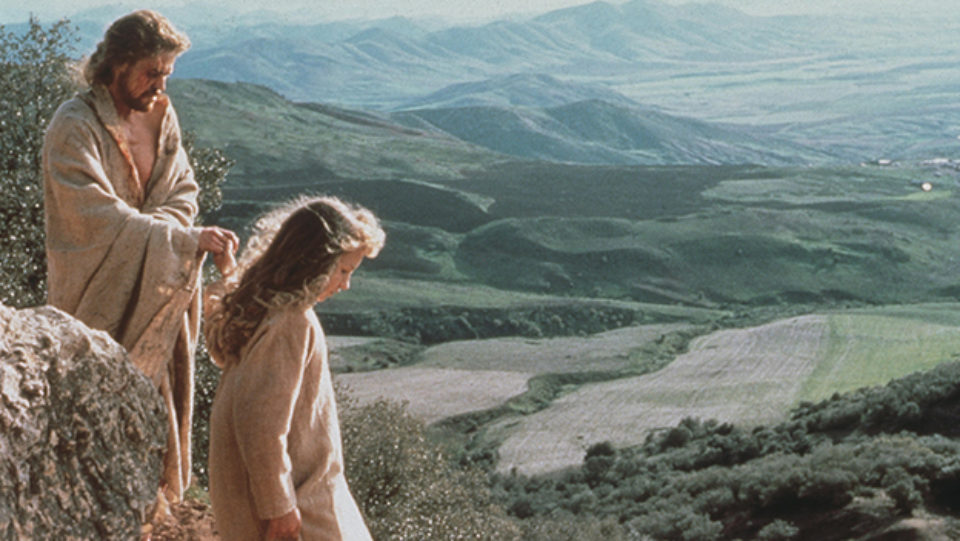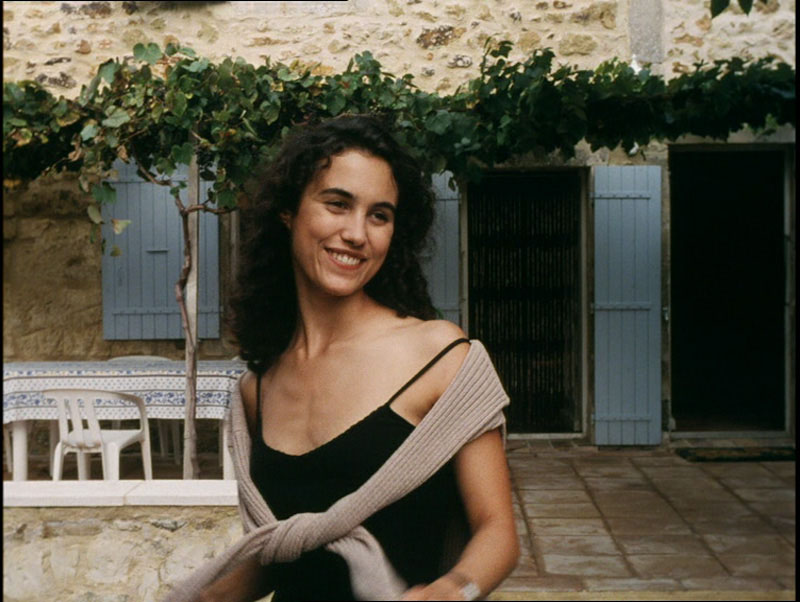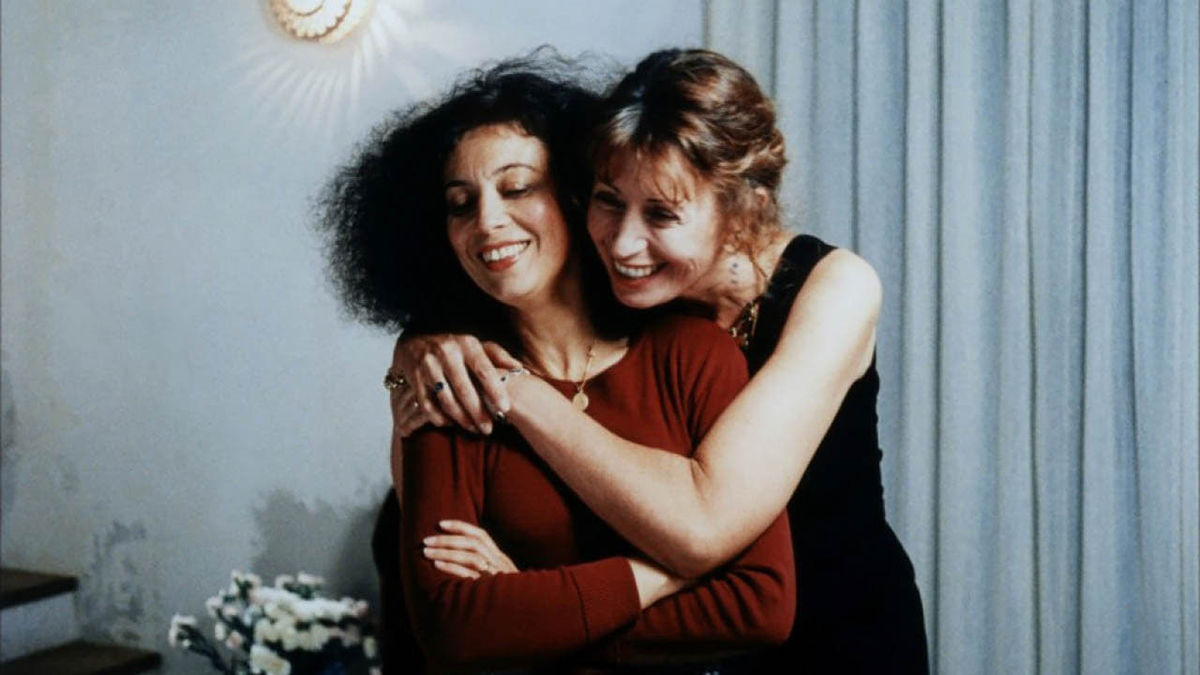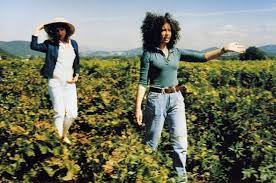KILLERS OF THE FLOWER MOON
 Scott Pfeiffer
Scott Pfeiffer  Wednesday, November 1, 2023 at 01:34PM
Wednesday, November 1, 2023 at 01:34PM “The blood cries out from the ground.”
That's God to Cain, after the latter killed Abel, as cited in David Grann's narrative non-fiction book Killers of the Flower Moon, which Martin Scorsese and Eric Roth have adapted for their new film.
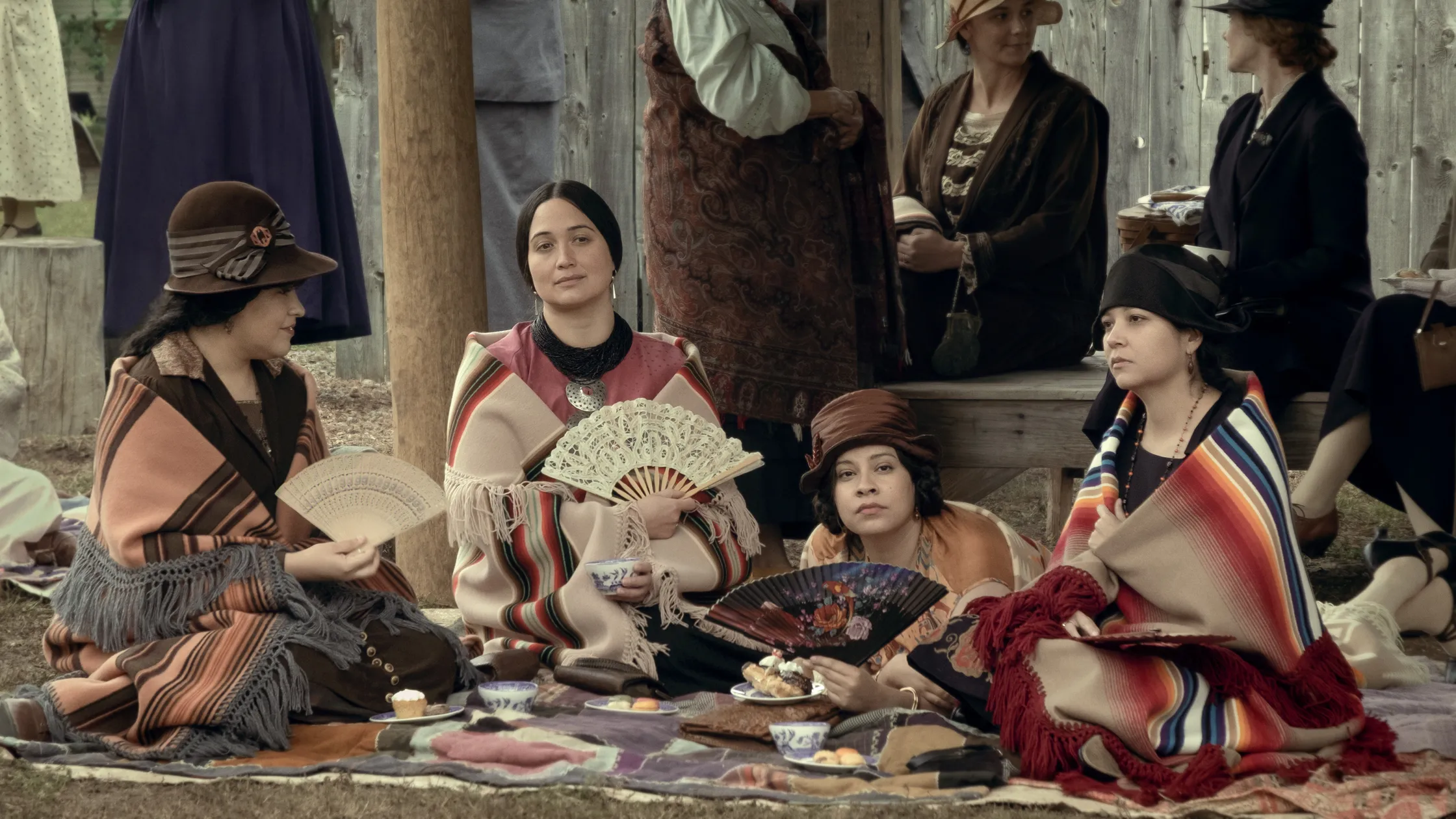
From Goodfellas in 1990 on, I’ve made the trek to the theater to see (almost) every new Scorsese film on the big screen. They’ve been constants through my many changes, and there are few directors who mean as much to me on a personal level. At a point when I was coming of age, his cinema brought together all these worlds with which I was fascinated: serious cinema (a new interest then), rock ’n’ roll, a vision of urban ethnic America that was thrilling for a WASP from the country.
Like The Irishman, Killers of the Flower Moon is Martin Scorsese in winter. Upon first viewing—and multiple viewings and the passage of time will bring more clarity—I believe Killers of the Flower Moon will rank with his greatest films. It’s passionate and personal, in other words a story he needed to tell, and those are the stories that tend to produce his richest work (although maybe not the funnest). It’s also vicious, beautiful, bold and, somewhat paradoxically for the dark subject matter, compulsively watchable. That said, it is emotionally draining. What's more, it's released into a fraught moment in American history when the right-wing hopes to censor any work taking up the subject of whiteness, as a form of historical subjugation and denial of the humanity and agency of non-white peoples, whose lives demonstrably did not matter in this country.
I’ve been through David Grann’s book twice, and it strkes me that the way Scorsese and Eric Roth have translated Grann's work to the screen is a model of creative adaptation—done, it should be said, in very close collaboration with the Osage Nation. They’ve thoroughly transformed the material into a classic Martin Scorsese picture, in ways both ingenious and debateable. This is a movie that's thinking as much about formal questions, about movie history and genre (it's Scorsese's first take on the Western) and acting and storytelling itself, as it is about the plight of the Osage.
(And, just to get the question you were wondering about out of the way: yes, I made it through all three-and-a-half hours of Killers of the Flower Moon without a pee break!)
The film is about the Osage Reign of Terror (by which is meant the terror perpetrated upon the Osage). Scorsese sketches elliptically what Grann laid out linearly, having a character parse a history book, among other feints. The background for the story begins when the Osage Indians were driven to a presumably worthless reservation in northeastern Oklahoma. When they discovered that their land was sitting above some of the largest oil deposits in the US, the Osage became, for a time, the richest people in the world. That’s right: in the 1920s, the richest people in the world were Native Americans in Osage County (the Pawhuska and Fairfax area), Oklahoma. Prospectors were compelled to pay the Osage for leases and royalties.
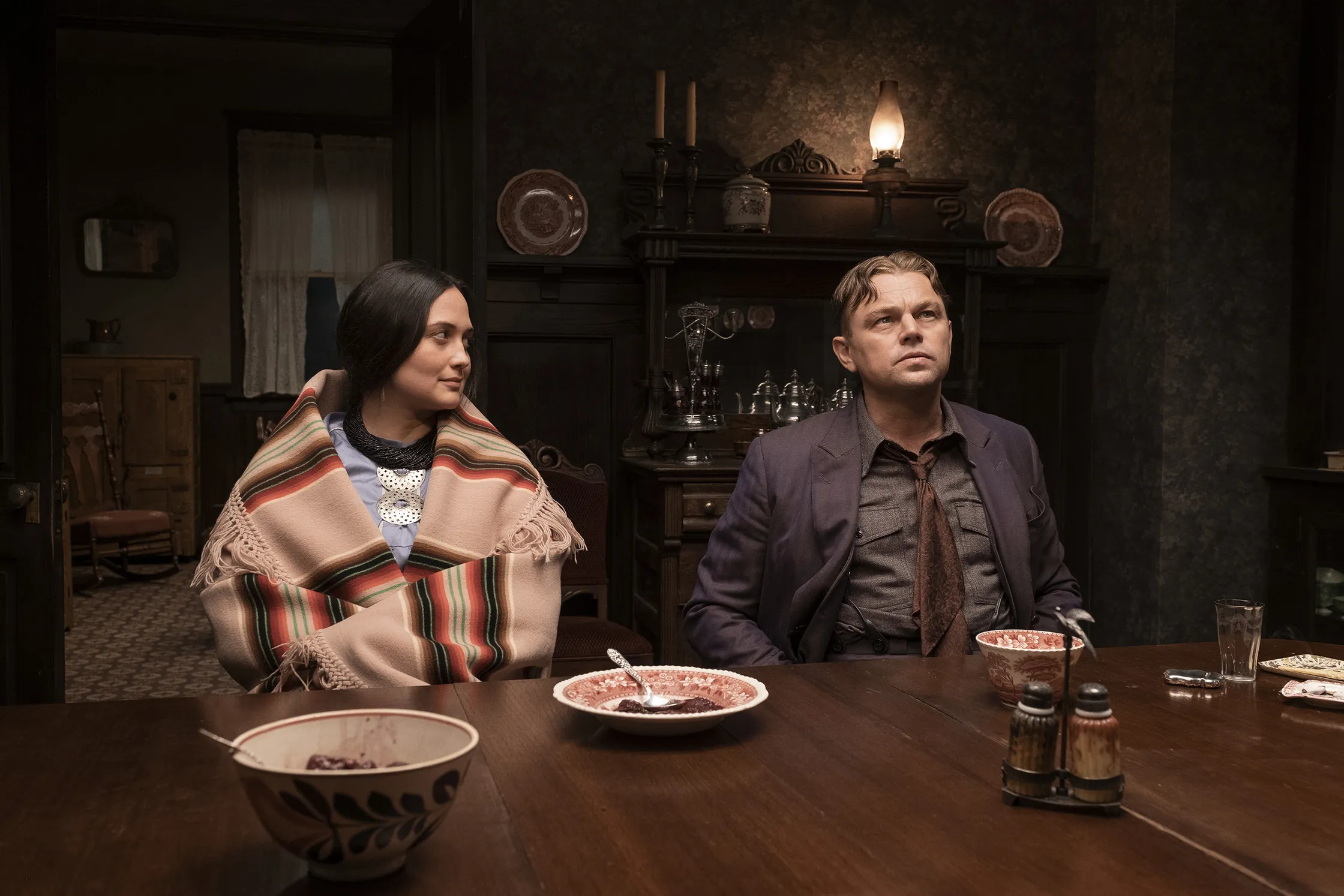
Of course, whites could not allow this to stand: for one example, the Osage could not always spend their own money as they desired because of a federally imposed system of financial guidelines, which included declaring them "incompetent" and therefore in need, naturally, of the white hand as their wards or "guardians." Not content to leave it there, whites bent on extraction infiltrated Osage life at every level. White men married Indigenous women in order to kill them. Then the deceased's headrights, meaning her share in the tribe's oil money, would accrue to the survivor, the murderer. Heartless enough?
Ernest Burkhart (Leonardo DiCaprio, intense, his volcanic emotions rippling across his face) married Mollie (Lily Gladstone, unforgettable, smart and sly, keeping her cards close to her chest: "The Osage know much more than they say," as Hale puts it). The murderers' plot was to direct all headrights towards Mollie by killing off her family through such means as poisonings, shootings, and bombings. Ultimately they would kill Mollie, so that Ernest would control her wealth. Ernest himself was absolutely controlled by the instigator of the entire conspiracy, William "King" Hale (Robert De Niro, always fun when he's got a meaty psycho-killer role to sink his teeth into), Ernest’s uncle/surrogate father. Hale was a man of wealth and power; Grann compares him to Faulkner’s Thomas Sutpen—a man who came out of nowhere to reinvent himself. He presented himself as a paragon of law and order; in fact, he held himself up as Mollie's most staunch protector.
(As revealed in the concluding chapters of Grann's book, where he reopens unsolved or cold case murders, Hale was far from the only head of organized murder conspiracies. He concludes there was a culture of killing.)
Before Grann investigated, the history of the killings was largely forgotten, suppressed, certainly never taught in schools, a bit like the contemporaneous Tulsa Race Massacre, which Hale sees in a newsreel, and which is evoked by terrorized Indigenous neighbors in the aftermath of a bombing. Republicans, I should say, hope to keep this history suppressed, ensuring that a needed national confrontation with whiteness (as a state of mind) never happens.
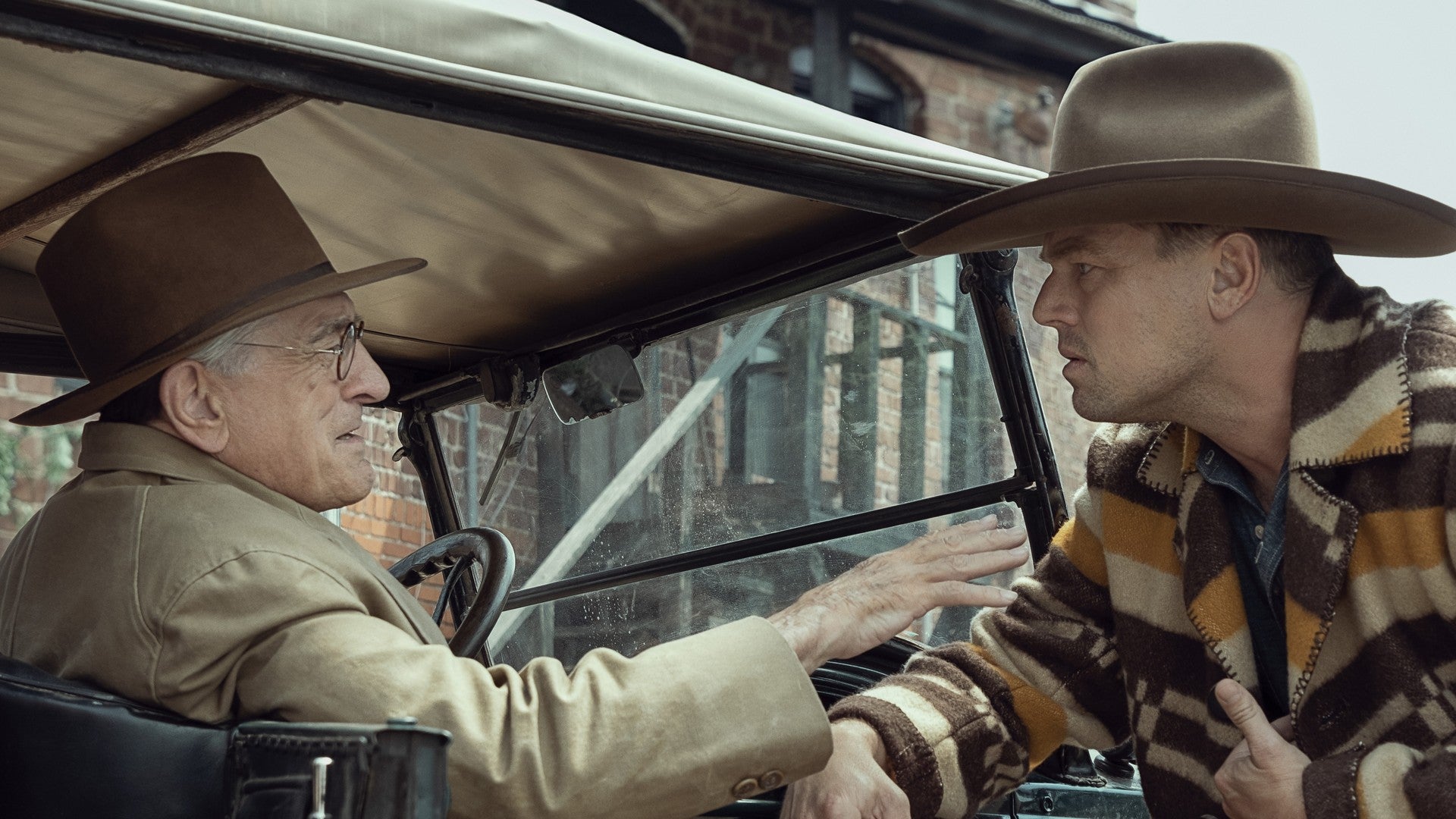
Scorsese has always been interested in the bad, sometimes the outright evil, in the essentially good, albeit weak, man, and in what good there may be in the bad man. Moral ambiguity. Shades of gray. The realm where evil shades into weakness is where Scorsese and DiCaprio situate the dopey Ernest. They've invented a scene which more than hints at the idea that Hale had Ernest next in line after Mollie for killing. Old Ernest basically lets Hale talk him into his own dispatching, as well. (Even Mollie and Ernest's daughter, little Anna, four years old, eventually dies, and the film portrays Ernest as genuinely destroyed by that. Was he not always aware or just in denial about how far the plot would go?)
Mollie, characterized in the book as “the marked woman,” has three sisters. There's the free-spirited alcoholic Anna Brown (Cara Jade Myers), who goes missing and is eventually found, shot execution-style. Another sister, Minnie (Jillian Dion), is also deceased. The third, Rita (Janae Collins), is married to a man named Bill Smith (Jason Isbell), who’d previously been married to the late Minnie. Lizzie (Tantoo Cardinal), Mollie’s mother, who's held on to traditional Osage beliefs, grows sicker and sicker after Anna’s death, and eventually dies herself. Ernest himself has two brothers, Bryan (Scott Shepherd) and Horace (Joshua Close). As Anna was last seen with Bryan, he becomes the prime suspect in her murder. (She may have been pregnant with Hale’s baby, which the movie finds a way of suggesting obliquely when Hale interrogates a subordinate.)
Look at the beautiful textural details in this movie. It’s the details that make a Scorsese film such an outstanding sensory experience. Details of gesture, of texture. In Goodfellas, I’ve never forgetten the way a man slices garlic with a razor blade, so thin it dissolves in the pan.
In Killers, I think of the way Mollie combs her daughter’s hair. The wrinkles of DiCaprio and De Niro’s faces in contrast with Gladstone’s, her visage smooth as silk, her skin beautiful. You can feel the roughness in the men's faces, in DiCaprio's perpetual grimance, whereas her face is so inviting. Look at the texture of the killer Ramsey’s (Ty Mitchell) children’s hair, because it hasn’t been washed. You see the hay on the ground, and it totally marries with the hair. You feel the harshness of the wood. There’s nothing easy about this life, because of this harshness. These are not textures you want in your life. This is the way all the whites are presented (quite appropriately), while the Osage are presented in a beautiful light: beautiful authentic dress, beautiful skin.
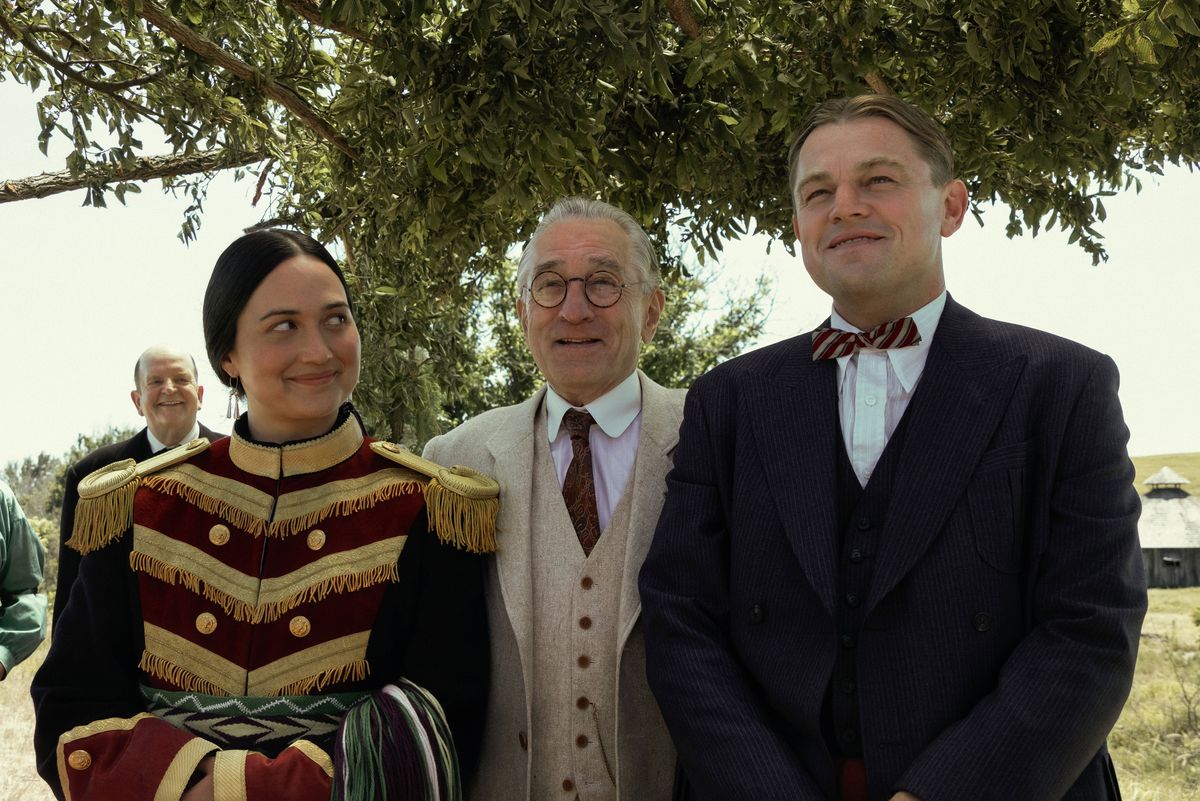
In tone, the film is elegiac, stately; the three-and-a-half hours were gone before I knew it. Ever since perhaps The Aviator I've noticed a remarkable assurance of pacing in Scorsese, the feeling of being borne along on the narrative like a boat upon a steadily unrolling ribbon of film. This is in part due to Thelma Schoonmaker’s sublime editing. We can speak of the Late Style of Scorsese, of his formal mastery, but he isn’t the only one. When we watch Killers we’re watching the Late Style of Schoonmaker, master editor, as well.
You might say Scorsese’s fabled expressionism is in check here, though one of the scenes that still plays in my memory is a beautiful example of it: the one in which Hale sets fire to his own ranch for the insurance. As the FBI men look on, the fire sets the screen ablaze; men shimmer in front in silhouette. The blaze illuminates Ernest and Mollie’s bedroom window. None of this is strictly realistic; it plays with spatial proximity, among other things. It evokes a feeling, a heat, a passion both evil and carnal. Prime Scorsese.
The late Robbie Robertson’s haunting music—hypnotic, ominous, propulsive—contributes a feverish tone as well, with its Indigenous instrumentation and raw harmonica blues. Robbie's music, with the Band and Bob Dylan, meant a tremendous amount in my life. Here, his music is eerie, traditional, and rock ’n’ roll at once. The use of Indegenous drumming creates a sustained portal to another time—the heartbeat of the past, inducing a state in which we live there. This project would’ve been quite personal to Robertson, himself of native blood. This last score for Scorsese in their decades-long creative and personal relationship is a worthy epitaph. The picture is dedicated to him, as well.
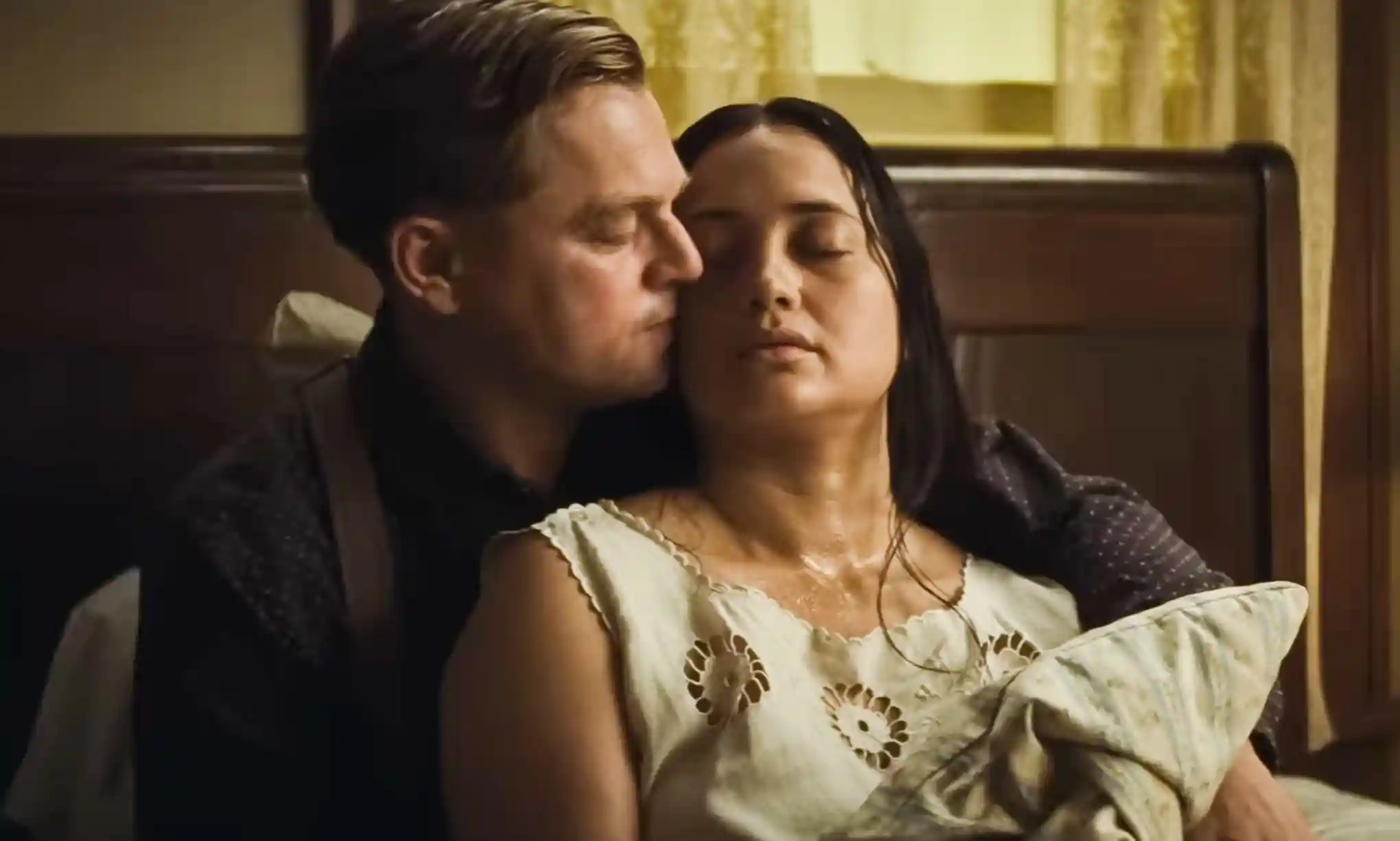
There is also, it must be said, a comic tone to the proceedings. On the excellent "Critics at Large" podcast, the New Yorker cultural credit Vinson Cunningham was on the money when he chacterized the classic Scorsese experience as "laughing when you wish you hadn’t"; I can recall exactly the moment I did that. A man is discussing with his lawyer the legal niceties of killing his Indigenous wife and her children to get their headrights. Even his lawyer is impressed by the brazenness of his brute racism: so breathtaking it’s amusing. Then you realize, wait, what am I laughing at here? Maybe the picture needed an infusion of humor to balance it out, or it would’ve been just too despairing an experience, with all the death and sickness and grief.
Eventually Tom White (Jesse Plemons, always a pleasure), an old school federal lawman comes to town. (The book billed itself as a story of "oil, money, murder, and the birth of the FBI"; the film largely jettisons the latter but keeps the oil, money, and murder.) Since the local constabulary aren't up to the job (most of them are in on it, in fact), White begins to gather evidence against the killers along with a team of undercover agents, including Agent John Wren (Tatanka Means), who, as an Ute, was one of the only Native Americans in the precursor to the FBI.
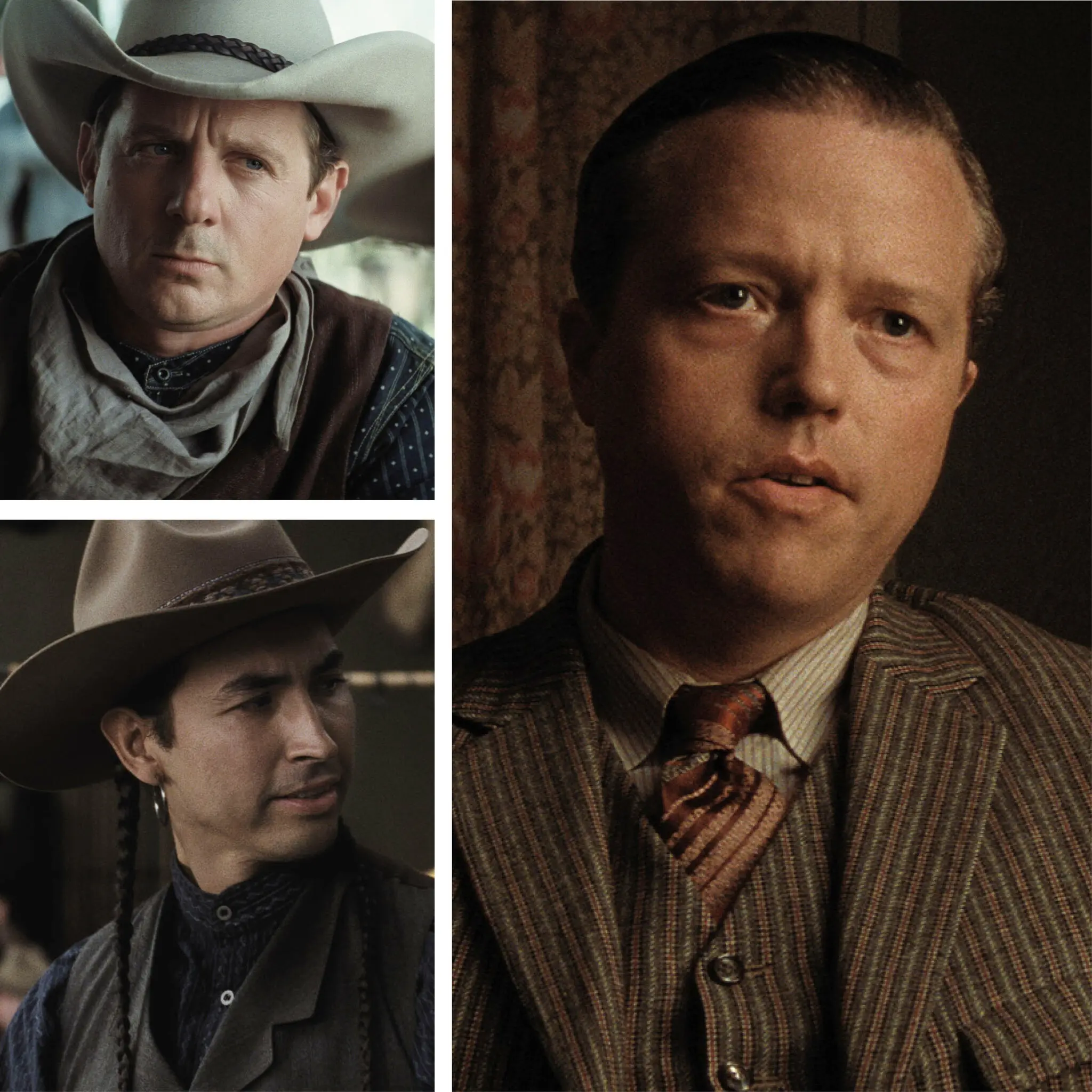
Part of the the fun of the movie (fun seems a strange word to use in this context, but here we are) is all the cameos. I’d have to see the movie again to spot them all, but it’s full of a rogues’ gallery of gamblers, bootleggers, murderers, etc. Henry Grammer (Sturgill Simpson) is a rodeo star and a gunslinging bootlegger who Grann characterized as a possessor of secrets, a controller of an unseen world. Asa Kirby (Pete Yorn), a stickup man with glimmering gold teeth, is the “soup man,” an expert in explosives who designs the bomb for a key murder.
There’s Blackie Thompson (Tommy Schultz), a bankrobber; Kelsie Morrison (Louis Cancelmi), evenutally revealed as Anna's shooter, and, memorably, John Ramsey (the aforementioned Ty Mitchell), who shoots Henry Roan (William Belleau) in the back of the head while Roan is behind the wheel of a car. For the film, Scorsese and Roth have invented a scene in which Ernest and Hale get into a comical fight over Ramsey’s incompetence at staging what was meant to look like a suicide. Again, the unbelievable callousness of the whites is played for laughs. Whose story are we watching here? I had expected the film to be the story of the Osage, but for long stretches it's actually the story of the killers. I've come to believe this is Scorsese's way of showing and satirizing the depths of the demented depravity of whiteness.
I liked Charlie Musselwhite, whom I know as a bluesman’s bluesman from Chicago, as an important witness in White's investigation.
Jason Isbell is particularly entertaining as Bill Smith, the horse thief who's the husband of Molly’s sister Rita. He suspects something curious about Lizzie’s death and undertakes his own investigation. Ernest can't stand Bill's affected manner, and the contempt is mutual. Their evenually quite amusing interactions are classic Scorsese, another instance in which he's transformed this material into a Scorsese film.
The film achieves a Godfather level of excitement and filmmaking bravura as Hale arranges for the deaths of all these potential witnesses.
Here we come to a fascinating level on which the picture works. Scorsese has conceived of these people, including the key marital relationship of Molly and Ernest, in terms of classic movie characters as much as with reference to the real people upon whom they’re based. He couldn't help noticing the echoes of their relationship in such twisted-love pictures as The Heiress and Gaslight. What’s unusual about Killers is the almost po-mo conceptual level on which it's aware of itself as a work of art(ifice). For me, the double-level on which it’s working—real people imagined in reference to the fictive—gives it an extra layer of interest that a straight reenactment wouldn't have. It's an ingenious approach which helped Scorsese and DiCaprio and Gladstone try to get at the central mystery of Molly and Ernest, the idea that on some level he might really love her. Still, I'm not sure how much it helped me understand whatever their bond might be. (He's certainly complicit in Mollie's gradual poisoning, even though what's he's giving her is presented as medicine under the auspices of the Shoun brothers, corrupt doctors in on the murder plot.)
This brings us to the complexity and audacity of that radio-play coda, which includes Scorsese’s moving cameo, where he concludes this epic story by telling us that Mollie's obituary did not even mention the murders. Here he’s admitting that the very movie we've been watching is part of the process (the problem?) of transforming history and tragedy into a constructed narrative, a true-crime podcast; that Killers of the Flower Moon itself is playacting and sound effects and artifice, albeit at an exalted level of artistry. At the end of the day, even though this movie is an attempt to right an historical wrong, it’s still just a movie. In a way, it's a critique of the limits of culture, for all its life-saving, world-changing power. Scorsese doesn't want there to be a false sense of redemption. The redemption is up to us, the inheritors of the problem. What do we think, what are we going to do about it in the days ahead? What's going to change?
There's a school of thought that revels in the Late Style period of our master artists, that believes their work attains a new level of sublimity and grace when they reach their seventies and eighties. Scorsese has entered that realm with The Irishmen and now Killers of the Flower Moon, summoning his last words on his perennial notions of sin and guilt.
Peter Beinart made a comment on The Ezra Klein Show podcast recently. His comments were in a different context, but they strike me as a good last word when talking about Killers of the Flower Moon:
"Things in the deep history of the country, if they’re never dealt with, if they’re never acknowledged, if there is never a process of reparation and historical justice, they remain there, waiting for a moment of trauma to come back."

